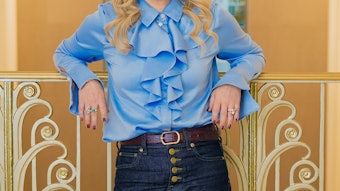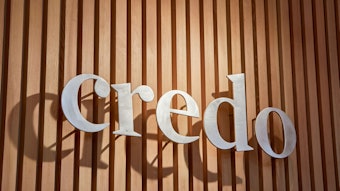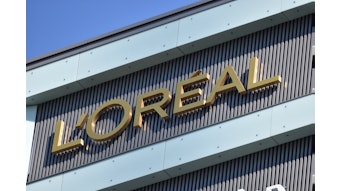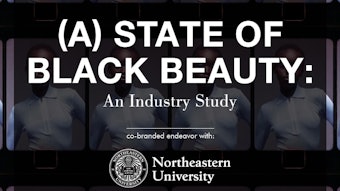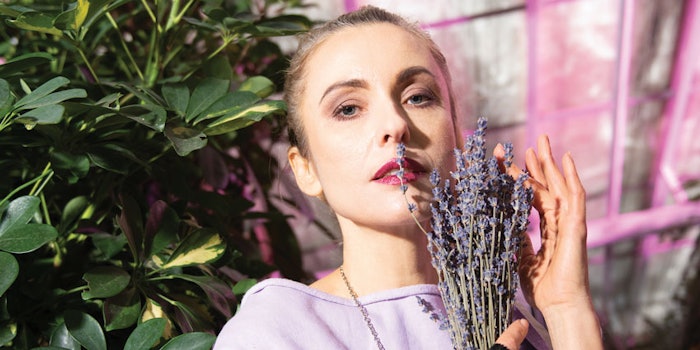
It feels like we’ve been building up to 2020 for a long time. Key meta-trends that have been bubbling under the surface for a long time are now part and parcel of the world that consumer brands inhabit today. Coherently addressing the market’s demands while supporting brand DNA requires the founding of a clear sustainability vision.
10 Years is a Lifetime
A recent survey of 2,000 U.K. consumers by our colleagues, James Cropper, a UK-based bespoke paper company and supplier to brands such as Burberry and eco-fragrance brand Floral Street, asked about shopper expectations of beauty and fashion brands.
Unsurprisingly, sustainability was the headline that emerged. Half of the consumers surveyed admitted that a decade ago they wouldn’t have given a thought if the packaging of a fashion or beauty item was eco-friendly. Today, more than a third expect those brands to use reusable or, at the very least, easily recyclable packaging as a matter of course. And more than a fifth believe eco-friendly qualities will be one of the most important considerations in the coming decade.
Other findings were that a quarter of consumers expect exactly the same brand experience online, in-store and on social media, and a staggering 90% want personalized fashion/beauty products that help them feel connected to the brands they buy. Digital-friendly, omnichannel excellence, personalized perfection, experiential brilliance—and all without harming people and the planet to boot? The future has arrived. And it is demanding.
Brands Must Act When Governments Won’t
Brands can’t wait for slow-moving and reactionary governments to put in place the solutions for them. The 2019 edition of the annual Edelman Trust Barometera (measuring the levels of trust and credibility in government, media, business and not-for-profit organizations), which surveyed 33,000-plus respondents in 27 countries, found that 76% of global consumers expect businesses to take the lead on issues like climate change and diversity.
A Vision Answers 3 Questions
Any pre-launch startup or legacy brand seeking to create or retain success should begin with a sustainability vision that addresses the complexity and competing demands of consumers. Think of the vision as the center of a circle around which everything else radiates. This center answers the fundamental questions:
- What is the business about?
- What is it there to do?
- Why does it exist beyond making a profit?
What Does a Vision Encompass? Everything.
We often say that Lush is more like a campaign organization with a beauty brand attached than vice versa. And its recently restated vision—“to create a cosmetic revolution to save the planet”—illustrates the point exactly. Everything else flows from that fundamental vision and purpose: ingredient choice, suppliers, formats, packaging, business practice, everything.
Consistency is Non-negotiable
Sustainable leadership has to start from that central vision because, just like sweeping the metaphorical dirt under the rug or papering over the cracks, whatever misdeeds exists will always be found and any cracks will always widen. For example, the Edelman Trust Barometer found that 78% of people think how a company treats its employees is one of the best indicators of its trustworthiness. So you can have all the sustainable ingredients and packaging you want, but if you’re damaging people in your supply chain, it’s not enough.
To take a shocking example, I was horrified to see the recent NBC News expose (cited in the Daily Mail) of Madagascar’s mica mining industryb. Tiny children, including toddlers, were engaged in forced labor and exposed to the boiling heat for hours a day, risking injury, asthma and tuberculosis to produce the shiny mineral, more than 10% of which ends up in color cosmetics for pigment and shinec.
According to research by Danish NGO DanWatch, 12 out of 16 international cosmetic companies don’t disclose where their mica comes from. And even though seven of them support UN standards, including combating child labor, because mica is often sold to middlemen, they simply have no way of knowing who is working underneath the larger certified companies.
A 2016 report by the Thomson Reuters Foundation found that seven children had been smothered to death in mica mines in the span of just two months. Beauty’s ugly secret, indeed. Lush proactively created its own synthetic mica precisely because it couldn’t guarantee its natural supply chain was cruelty-free.
Beauty players have joined the fight. Retailer Credo Beauty has lent its support to RMI. Credo co-founder and COO Annie Jackson noted, “This is a complicated issue, and the supply chain is very murky, so processors’ claims of ‘no child labor’ may be meaningless. We joined RMI so that we can work together with others in our industry. We know that can’t change this issue alone, nor can we just stand by.”
Colors & Effects, a brand of BASF, also joined the discussion surrounding responsibly sourced mica. The company released a video tour of its North American mine in Hartwell, Georgia, where it sources the mineral in full transparency. The mine is free of child labor and provides fair and safe working conditions to its workers, according to the company.
Transparency, Not Perfection
Not all beauty brands are like, or should be like, the activist leadership of Lush. Therefore, not all visions will be the same—with the exception of honesty and transparency.
Whatever visions brands create—whether it be “to make the best most affordable skin care” or “be the most playful makeup ever”—will have to contend with the 2020 (and beyond) reality. This dictates sustainable behavior, even if at the most basic hygiene level.
Because our industry—like all others—is currently unsustainabled, with incredibly complex, long and often murky supply chains, flaws are awaiting discovery by the media and the general public.
For the full article, check out Global Cosmetic Industry's February digital magazine.
Footnotes:
awww.edelman.com/news-awards/2019-edelman-trust-barometer-reveals-my-employer-most-trusted-institution
The sustainability conversation is destined to address the effect of business practices on people, whether it’s the sourcing of mica, carnauba wax or palm oil (pictured is a plantation), which have been associated at times with unsafe working practices and environmental damage.
bwww.dailymail.co.uk/news/article-7695413/Child-slave-labor-Madagascar-mica-mines-young-children-working-13-hour-days-pennies.html
cMica, a mineral often used to produce shimmer or glitter in cosmetics, is often mined by child workers in India. Therefore, the Responsible Mica Initiative (RMI) has focused its efforts on ensuring ethical mica supply chains in the Indian states of Jharkhand and Bihar. The move may impact as many as 22,000 children. By 2022, RMI aims to have eliminated child labor in mica mining.
dAssuming one agrees that the definition of sustainability requires brands to conduct business without depleting any natural resources while generally preventing harm to the environment and society to support ecological equilibrium.

